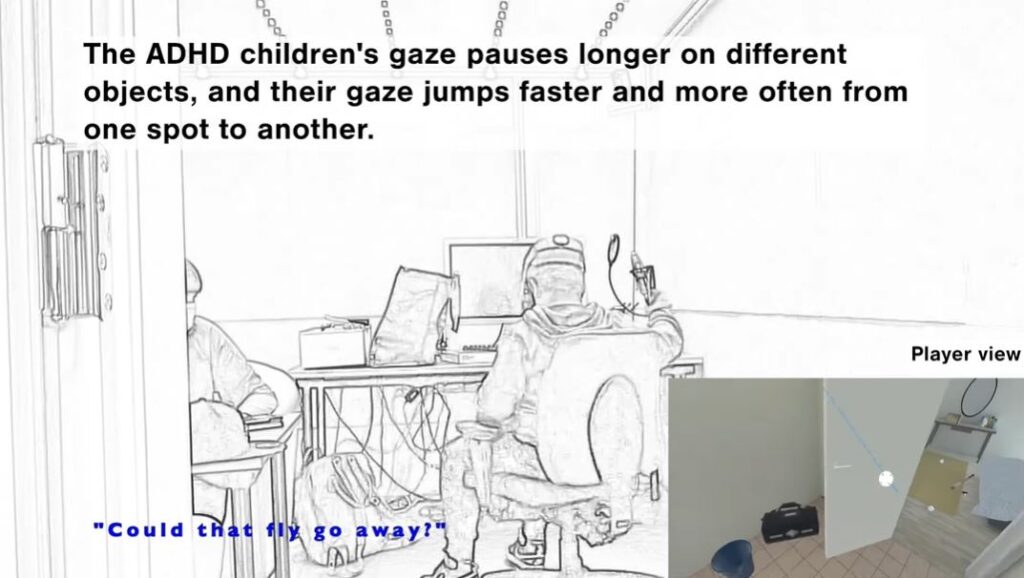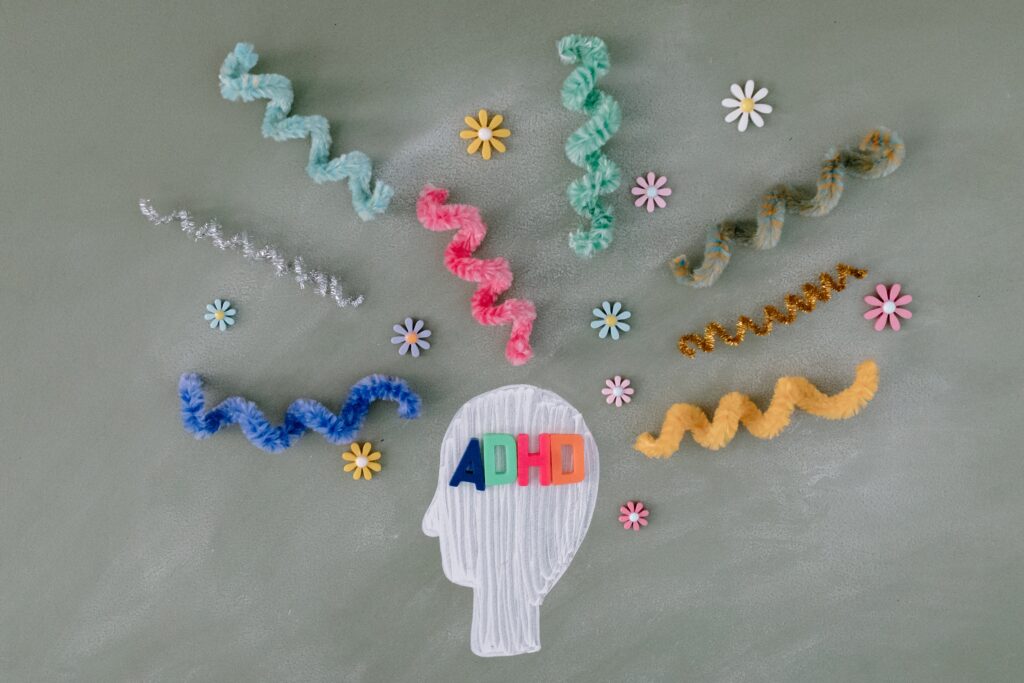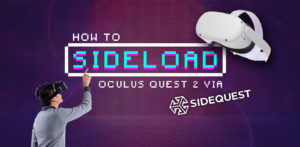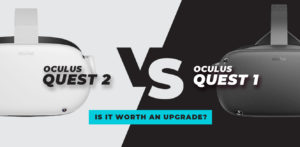Attention-deficit/hyperactivity disorder (ADHD) has been the topic of much research and investigation within the field of mental health for quite some time. People of all ages can be affected by this neurodevelopmental disease, which manifests itself in issues with focus, impulse control, and hyperactivity. Various therapy approaches have been used by researchers and clinicians throughout the years to aid people with ADHD in reducing their symptoms and increasing their quality of life. Virtual reality (VR) technology is one field that has shown enormous promise in this regard.
The use of virtual reality (VR) to help people with attention deficit hyperactivity disorder (ADHD) is unique and compelling because of the potential of immersive experiences and interactive simulations. VR can improve attention, focus, and cognitive skills by offering a secure and regulated setting for therapeutic interventions through well-constructed virtual settings. So, let’s dig into the exciting realm of virtual reality (VR) and examine how it might help people with attention deficit hyperactivity disorder (ADHD) in revolutionary new ways.
The Gaze-Based Attention Refocusing Training (GART)
Gaze-based attention refocusing training (GART) was created in a recent study to be used in a virtual seminar room (VSR). Adults with attention deficit hyperactivity disorder (ADHD) and healthy controls were subjected to a thorough multimodal evaluation while completing a continuous performance task (CPT) under three feedback conditions: genuine feedback, sham feedback, and no feedback. The goal of this study was to determine whether or not GART was successful in helping people with ADHD pay closer attention and concentrate.
The Potential and Performance of GART
The study’s findings about GART’s viability and efficiency are encouraging. Cybersickness was well tolerated by the participants, as evidenced by the fact that the trial was finished without any problems or delays. Those with ADHD were pleased with the VR experience. Good data quality and low data loss were found in the multimodal VSR evaluation.
There was no conclusive proof that GART improved participants’ ability to pay attention right away, but the study helped clarify some of the nuances of training’s knock-on effects. It’s possible that the time allotted for each feedback condition was insufficient for participants to fully internalize the GART-based metacognitive and refocusing methods. It may be necessary to undergo repeated GART sessions over the course of many weeks to see noticeable gains in cognitive ability, much like with neurofeedback techniques.
Unique Findings and Group Comparisons
The results of the study showed several unexpected patterns. The ADHD group made more mistakes of commission and omission in the sham feedback condition, indicating that the feedback stimulus was a further source of distraction. This confirms the results of the head actigraphy analysis, which showed an increase in head movements during the sham feedback condition. Those with ADHD may benefit from implementing the state regulation hypothesis, which is supported by the fact that the fastest reaction times were recorded under the genuine feedback condition.
The results of the study showed promise for the multimodal symptom assessment’s ability to distinguish between the ADHD and control groups. Omission errors were more common and reaction times were slower in people with ADHD compared to controls. Analysis of patients’ eye movements revealed that those with ADHD spent more time looking away from the source of the stimulus. After the experiment, however, both groups showed a similar ability to recognize distractors, suggesting that the healthy participants were able to more swiftly disengage their attention from the distractions.
Exploring the Technology of VR for ADHD Treatment
Beyond the inconclusive GART research, virtual reality technology is being used to treat ADHD. Recently, virtual reality has been used to screen for ADHD and teach people how to improve their focus and memory. Significant progress was made with the FDA’s green light of the video game therapy EndeavorRx for attention deficit hyperactivity disorder. This game helps kids learn to focus and multitask by having them complete challenging obstacle courses on their mobile devices. Positive effects on measures of attention have been seen across studies, both with and without the use of medication for attention deficit hyperactivity disorder.
XRHealth has also created a VR therapy software specifically for treating ADHD. The goal of this virtual reality (VR) intervention is to enhance focus, coordination, and planning while decreasing impulsivity. The therapists can adjust the therapy’s difficulty based on the patient’s eye movements, and the data is useful. Because of the COVID-19 pandemic, virtual reality therapy has become more widely used, allowing more people to receive treatment from the comfort of their own homes via online clinics.
Advancements in VR Technology for ADHD Diagnosis (EPELI)

Photo from Aalto University YouTube
Virtual reality (VR) technology has opened up new possibilities for the diagnosis of attention-deficit/hyperactivity disorder (ADHD), in addition to its treatment applications. Executive Performance in Everyday Living (EPELI) is a virtual reality (VR) game developed by a team of researchers from Aalto University, National Akademi University, and the University of Helsinki to diagnose attention deficit hyperactivity disorder (ADHD). This virtual reality (VR) experience is a more engaging and inspiring alternative to conventional diagnostic exams like the Continuous Performance Task (CPT) because it combines state-of-the-art machine learning algorithms with precise eye-tracking technology.
EPELI provides a realistic digital setting for observing and analyzing children’s ADHD symptoms, allowing them to participate in real-world activities. With the use of machine learning algorithms, the game can record and analyze a wide variety of player behavior and eye-tracking data, yielding useful insights into cognitive processes like attention and executive control. EPELI provides a thorough evaluation of a person’s attentional abilities and ADHD symptomatology by monitoring their gaze patterns, visual attention, and task performance in a virtual environment.
When compared to more conventional diagnostic procedures like the CPT, EPELI has several significant benefits. For starters, kids are more likely to cooperate with a doctor during a diagnosis when they’re having fun and interested in what they’re doing thanks to virtual reality. Children who are engaged and interested in the assessment process are more likely to provide results that are valid and dependable. The virtual environment is dynamic and interactive, so it can mimic real-world situations that may initiate or exacerbate ADHD symptoms. This ecological validity improves the reliability of the test by giving a more accurate picture of how a child’s attention works in real life.
EPELI’s built-in machine learning algorithms also make for some rather advanced data analysis and interpretation. The technology can detect even the most delicate indications and indicators of ADHD because of the sophisticated statistical models and pattern recognition algorithms it employs. This individualized strategy takes into account each patient’s specific traits and symptom profile, resulting in a more precise diagnosis.
The use of virtual reality (VR) technology for diagnosing ADHD not only provides a more interesting and precise evaluation but also promises future developments in the field. Ongoing studies attempt to perfect and broaden the scope of VR diagnostic tools by adding metrics like neurophysiological reactions and emotional management. Clinicians and researchers can gain a deeper understanding of ADHD and its underlying neurological mechanisms by combining these several types of testing, which in turn will allow for more precise interventions and individualized treatment plans.
As virtual reality (VR) technology advances, its potential to transform ADHD diagnosis becomes more obvious. There is hope for better diagnosis accuracy, less subjectivity, and better results for people with ADHD thanks to the combination of cutting-edge machine learning algorithms, precise eye-tracking technologies, and immersive virtual worlds.
More study and development in this area could revolutionize ADHD diagnosis, leading to more accurate and individualized treatment plans that take into account the specific needs of each patient.
How to Maximize Virtual Reality’s Benefits for ADHD
- First, get a professional evaluation. Working with a doctor or therapist who has experience with ADHD is essential before beginning any virtual reality (VR) interventions. They may examine you or your child’s needs to see if virtual reality treatment is a good fit, and then advise you on the best VR software and apps.
- Select effective virtual reality activities. Not all VR activities are created equal when it comes to resolving ADHD symptoms. Try to find virtual reality (VR) programs that aim to enhance concentration, focus, and other executive functions. Gamification, interactive tasks, and cognitive challenges are common components of these systems for helping people with ADHD achieve their treatment goals.
- When using VR to treat ADHD, it’s crucial to take baby steps and create attainable goals from the start. Begin with shorter sessions and lengthen them as your focus and endurance improve. Keep in mind that consistent practice is essential to see results.
- Virtual reality (VR) can be a helpful tool for controlling ADHD symptoms, but it shouldn’t be seen as a panacea on its own. It is most effective when used in conjunction with other methods of treatment, such as medicine, therapy, educational support, and alterations to one’s way of life. Join forces with medical experts to develop a comprehensive strategy that takes use of a variety of treatment modalities.
- Keep an eye on things and make any necessary changes to the virtual reality interventions as you go along. Document any shifts in ADHD symptoms, attention, and mental capacity. Your comments will be used to fine-tune the VR experience and make changes where they are needed to ensure its continued success.
Frequently Asked Questions About Virtual Reality and ADHD

Is virtual reality treatment for ADHD appropriate for everyone?
Virtual reality (VR) therapy has the potential to help many people with ADHD, while its applicability will vary based on characteristics like age, cognitive abilities, and personal preferences. The best way to find out if virtual reality treatment is right for you or your child is to talk to a doctor.
When treating ADHD, can virtual reality (VR) therapy pose any dangers or adverse effects?
While dizziness, eye strain, and motion sickness are rare, they can occur during virtual reality therapy for attention deficit hyperactivity disorder (ADHD). VR users should break up long sessions with short ones at first to get used to the technology. Use virtual reality equipment in a well-ventilated room and accordance with the manufacturer’s instructions for optimal safety.
Can virtual reality therapy treat ADHD instead of medication or talk therapy?
Virtual reality therapy isn’t meant to take the place of tried-and-true methods for dealing with ADHD like medication or talk therapy. It works best when included in a more extensive therapy strategy. Talk to medical experts to figure out which combination of treatments will work best for you.
How long until positive results from VR treatment for ADHD become apparent?
The time it takes to feel better after undergoing virtual reality therapy varies from person to person. The only way to get better at something is to practice over and over again. While some people may see benefits from regular virtual reality (VR) sessions in as little as a week, others may need many months. The ability to monitor development and adapt treatment properly calls for patience and regular assessment.
How may someone with ADHD benefit from virtual reality software or apps?
Many different virtual reality (VR) apps and programs exist for children and adults with attention deficit hyperactivity disorder (ADHD). Some methods instruct students to pay attention while others teach them to control their impulses. A healthcare provider or therapist can advise you on the best virtual reality (VR) software or app for your unique situation.
Keep in mind that while virtual reality therapy may help some people with ADHD, it is most effective when used as part of a larger treatment strategy. Healthcare professionals should be consulted to guarantee the most efficient and secure application of VR treatments for the treatment of ADHD.
Overall
Recent advances in virtual reality (VR) technology have shown promise as a treatment for ADHD. Virtual reality (VR) provides a controlled and safe environment in which to practice and improve attention, focus, and cognitive skills through the use of immersive experiences and interactive simulations. Virtual reality (VR) therapy, such as gaze-based attention refocusing training (GART) and video game-based therapies like EndeavorRx, have shown promise in reducing the negative effects of ADHD on patients’ daily lives.
Early research and therapeutic applications in the field of VR for ADHD have shown encouraging outcomes, but the field is still developing. More research is needed to confirm VR’s long-term benefits, refine intervention methods, and examine whether it may be used in tandem with other treatments that are helpful.
The potential for VR to revolutionize ADHD treatment is becoming more and more obvious as technology develops and VR becomes more widely available. Virtual reality (VR) has the potential to revolutionize the lives of people with ADHD, enabling them to overcome obstacles and thrive in their everyday lives through the use of immersive experiences, individualized interventions, and remote access.
Disclaimer: The content of this page is intended for informational purposes only and is not meant to substitute for the advice of a physician. ADHD, like any other medical problem, should be diagnosed, treated, and guided by a trained medical expert.
Additional Information Sources
https://link.springer.com/article/10.1007/s00426-022-01770-z
https://vrscout.com/news/study-shows-how-vr-could-help-diagnose-adhd/#
https://bmcpsychiatry.biomedcentral.com/articles/10.1186/s12888-023-04551-z






